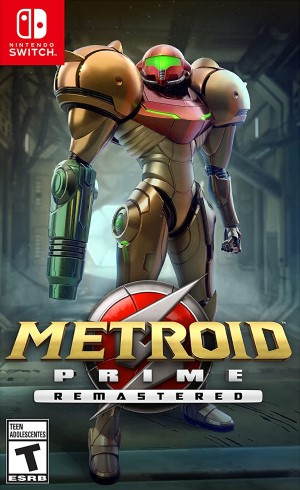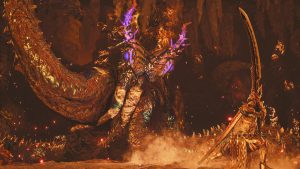
21 years ago, Nintendo released what many consider to be the single greatest game ever created. Against all odds, the new Metroid game, which had been turned into a first person shooter by a bunch of unknown Texans, was not only worth the franchise it came from (and which already included some of the most legendary and influential games ever created even at the time), but ended up being one of the best games ever.
"The alarming thing about Metroid Prime is that it simply refuses to age."
Metroid Prime was a total, thorough, comprehensive, unmitigated truimph in pretty much every possible way. It looked so stunning, so gorgeous, that it was among the best looking games ever (and it the tech and art underlying it all was so far ahead of its time that even today, the original Metroid Prime holds up. No longer the best looking game ever, but a good looking game regardless). The sound design was incredible, and thoroughly grounded you on the lost, alien, lonely planet you found yourself isolated on. The world design was a true 3D translation of the dizzying labyrinths of Super Metroid, but now in full 3D, seen through Samus Aran’s visor.
The storytelling went above and beyond most other games in the medium, presaging the rise of passive, interactive, and environmental storytelling techniques that future games such as Shadow of the Colossus, Prey, the Dark Souls games, as well as Nintendo’s own The Legend of Zelda: Breath of the Wild, would take cues from. And the overall structure, design, and gameplay of the title was legendary, and ended up influencing countless games to come in the years and decades since. I brought up From Soft and Dark Souls earlier – playing Metroid Prime Remastered shows us just how much of its DNA was present pretty much wholesale in that, and so many other games.
The alarming thing about Metroid Prime is that it simply refuses to age. In terms of gameplay, world design, music, storytelling, and even the graphics as already mentioned, it still holds up on par with, or beyond, most other modern games. You can turn it on right now for the first time and within a few minutes, you may completely forget that you are playing a 21 year old game. In other words, Nintendo and Retro Studios could have quite simply taken the original Metroid Prime as is, maybe upscaled the resolution, made it widescreen, and make it run in 60fps, and it would still hold up. But they chose to go above and beyond, to deliver a truly definitive version of one of the most definitive games ever.
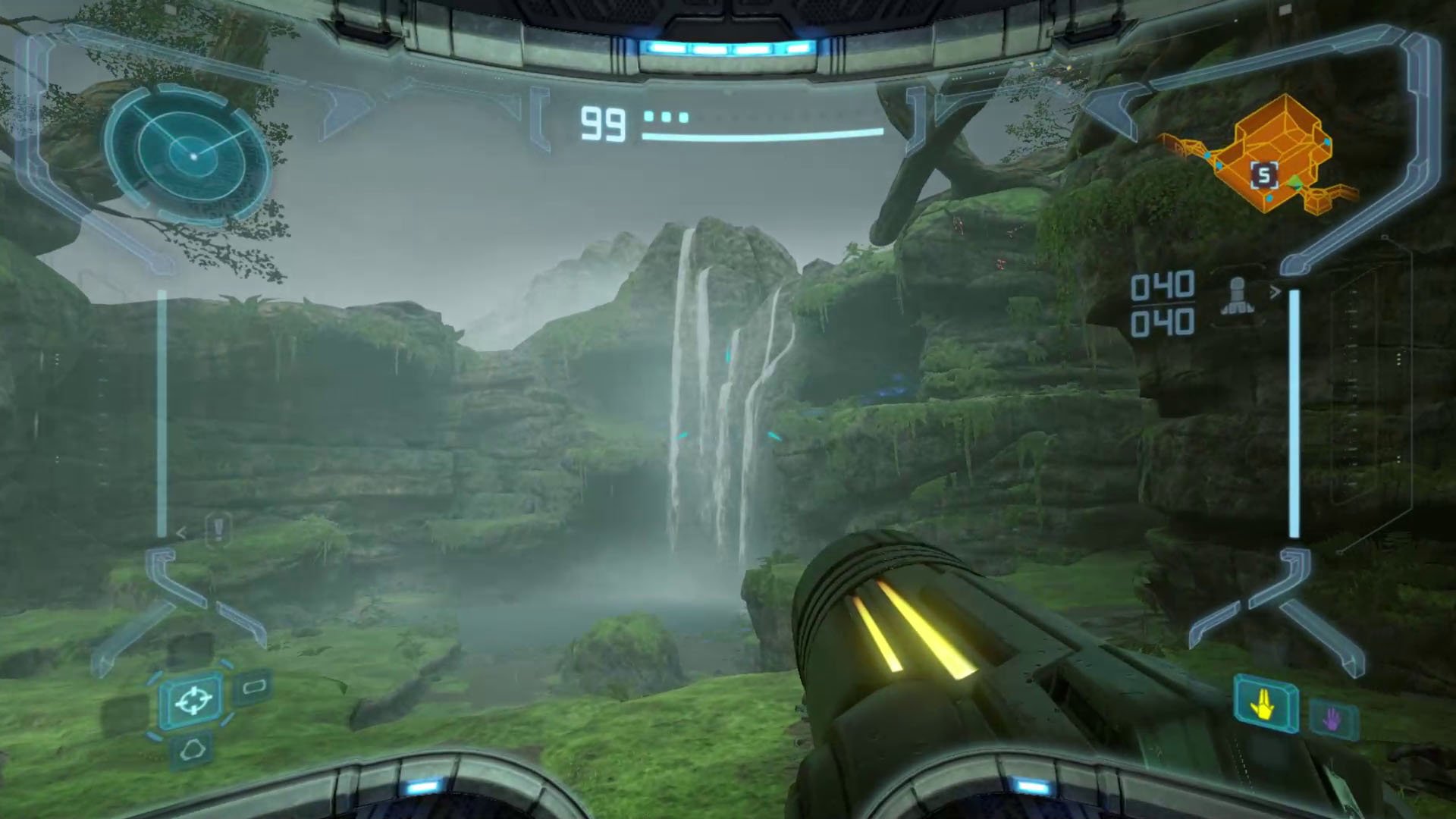
"Metroid Prime Remastered almost feels like a misnomer. The game’s visual facelift is so massive, so immense, that pretty much every single visual asset you can see or interact with in any capacity has been redone from the ground up."
Metroid Prime Remastered almost feels like a misnomer. The game’s visual facelift is so massive, so immense, that pretty much every single visual asset you can see or interact with in any capacity has been redone from the ground up. Environmental geometry, lighting, particle effects, alpha and transparencies, textures, resolution, frame rate, meshes, everything is rebuilt to make Metroid Prime Remastered look like you remember the original game looking, but brought up to modern standards. So overzealous is the update, in fact, that in the process, Metroid Prime Remastered ends up becoming one of the best looking games on the Switch, while being an update to a 21 year old GameCube game. It is a very thorough, very comprehensive, very extensive visual remake. We’ll come back to this in a second.
The remarkable thing about it all is that while the visuals are updated to an absurd degree – this game is closer to Bluepoint’s Shadow of the Colossus and Demon’s Souls, or the just released (and excellent) Dead Space remake in terms of the visual facelift it got – all of that happened without the original art style or atmosphere or aesthetic being compromised at all.
Usually, at least some of the original aesthetic ends up being diluted or compromised once more detail is added to an image (in part because very often, the original aesthetic exists the way it does because of the technical limitations of its time). In this case, somehow, that did not happen. It just serves to reinforce just how incredibly ahead of its time and future proof the core art style of Metroid Prime really was all that time ago to begin with.
I’ve called the game a visual remake a few times already, and I want to explain that terminology, at least the way I see it, a little. In terms of the graphics and visuals, this game goes far beyond a simple remaster. Every asset is either touched up and updated beyond recognition, or outright redone from the ground up. But the actual core game here is identical to what you played in 2002. With one critical exception which we’ll get to in a second, this is very literally the exact same game that it was all that time ago.
The maps, level design, enemy design, AI, even the HUD and UI, nothing has changed at all. You would think that this would be hearing, particularly given the game’s age, and the efforts made to bring it up to modern standards in the presentation related areas, but it isn’t. As I mentioned, Metroid Prime was so far ahead of its time, and so bonkers in terms of being great at what it set out to do, that it manages to not only hold up as a modern game today, but ends up being better than most other modern games in the process too.
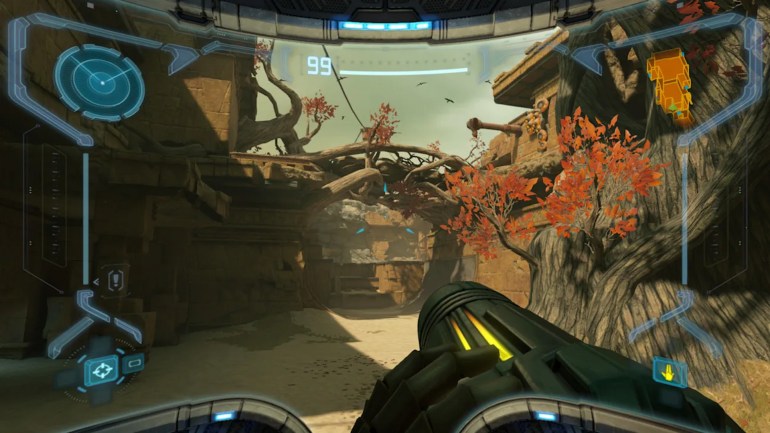
"The one area where the game makes changes – a lot of them – is the controls."
The one area where the game makes changes – a lot of them – is the controls. Well, changes might be the wrong term to use, because what it does is add things. Options, really. The game allows you to not only play with the original GameCube controls (in case you never played the original release, the GameCube release was not dual analog, and instead had a very unique and specific control scheme that people love to this day – so it’s good that they brought it back), but also the excellent Wii controls (the pointer based aiming from the Wii release has to be emulated using gyro on the Switch.
It’s more accurate, but also more sensitive to drift, and requires you to reset the cursor fairly frequently), and a fully fledged, modern dual analog control scheme. The game includes gyro assist for aiming, it includes a toggle for the lock on, allowing you to have a full lock-on, a “soft” lock-on that air you in the right direction, but lets you make specific adjustments, and no lock on at all. You can customize individual axes for the camera, sensitivity, and you can even mix and match these options on the fly. What’s most impressive is that each of them feels well balanced, and the game somehow lets you switch between these completely different control styles (that all lead to very distinct and unique flows and gameplay loops from one another) on the fly.
Other than the control options, Metroid Prime Remasted also includes some new accessibility options (there is a color blindness assist filter that I am reasonably sure is new, and that I was happy to see, given how much the world gating and UI and HUD in Prime rely on colors to convey information), all the extra content that the game ever got (including everything in the original concept art gallery, from models, artwork, and music, to other unlockables), and even the narration that was added in the European and Japanese versions of the game.
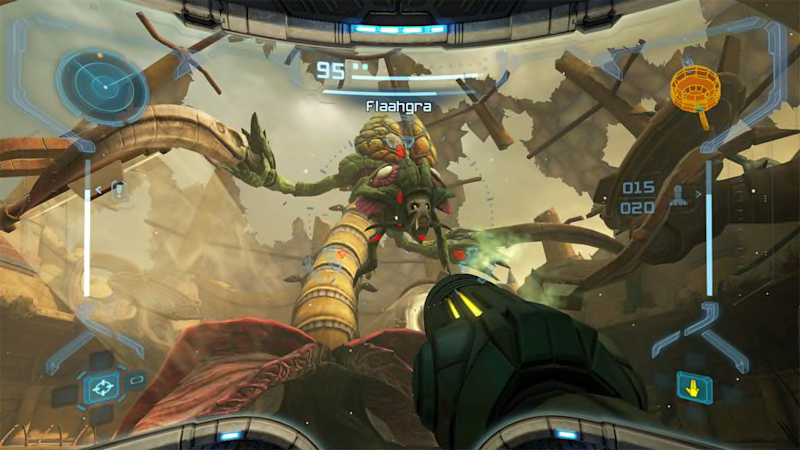
"In literally every way possible, this is the best, most definitive, most comprehensive release of Metroid Prime."
Really, in literally every way possible, this is the best, most definitive, most comprehensive release of Metroid Prime. It includes all the content from all the different versions. It includes all the control schemes from all the different versions (including some of its own). It includes this game looking the best it ever has, veering on being a full on remake, without diluting or compromising on the look and atmosphere of the original.
And at its core it is the same game from 20 years ago untouched, except that 20 year old game is so ridiculously ahead of pretty much everything else on almost every single front that matters (and certainly every single area that it puts up a fight in), that even with the core being untouched, 20 years later, this game ends up being better than most other games released today regardless. Like, literally, on every possible level, big and small, this represents the best possible version of one of the best possible games you can buy today, in any genre, on any platform.
And all of this for only $40 is absurd. It’s a steal. Metroid Prime Remastered, just by existing in the form it does, becomes one of the best looking, playing, and just best in general, games of this year, of the Switch, and of the generation in general. You must try it, whether it will be your first time (win which case you are in for a treat) or your umpteenth replay.
And you can join me, and the other long suffering Metroid fans, in hoping that Prime 4, whenever it does end up coming out, actually lives up to the absurdly, unreasonably high bar set by this 21 year old game.
This game was reviewed on Nintendo Switch.
The core game design holds up remarkably well, and remains better than most other games around to this day; the graphical face lift is immense; the control options allow players to play this game in whichever way they like; new accessibility options are great; one of the most ambitious remasters (for one of the best games ever) at a budget price is a great proposition.
No changes to the core game design mean some of it might be harder for modern players to adjust to at first.










